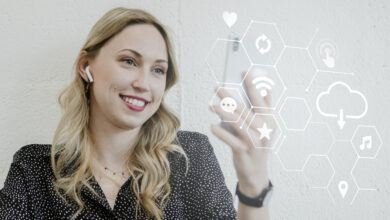How to Use AI Photo Generators in Marketing

Discover how AI photo generators can transform your marketing with faster, personalized, and high-quality visuals that boost engagement and save costs.
In a world where attention spans have shrunk to seconds, the look of your brand can make or break that first impression. And yet, sourcing the right images, unique, relevant, high-quality visuals that don’t scream “stock photo”, is still one of the biggest bottlenecks in marketing.
That’s where AI photo generator come in.
Platforms like MagicShot.ai now let marketers instantly create original, realistic visuals tailored to their brand, their audience, and their campaigns, no photoshoots, no waiting, no overspending.
But here’s the real kicker: it’s not about replacing creativity. It’s about unlocking it.
Why AI Photo Generators Are a Game-Changer for Marketers
There’s a shift happening. Just like Canva made design accessible to non-designers, AI photo generators are democratizing visual creation.
Here’s why that matters:
- Speed: Generate visuals in minutes, not days.
- Flexibility: Tweak lighting, mood, and setting without reshoots.
- Cost efficiency: Save thousands on photographers, studios, models, and licenses.
- Personalization: Create visuals just for your niche, your message, your moment.
And with the rise of that are increasingly photorealistic and emotionally resonant, the line between traditional and AI photography is starting to blur.
10 Smart Ways to Use AI-Generated Photos in Marketing
1. Ad Creative That Pops
Need a fresh visual for a new ad set? AI-generated photos can be tailored for mood, setting, and product focus. No more digging through stock libraries hoping something fits.
2. Social Media Visuals at Scale
Keeping up with social content is exhausting. AI photo generators make it easier to create daily visuals that feel custom, not canned.
Imagine a wellness brand generating calming, spa-like imagery every week without a single shoot. That’s leverage.
3. Rapid A/B Testing for Visuals
Want to test which image performs better, outdoor vs. indoor, warm lighting vs. cool, or casual vs. premium? Create both versions in minutes, run the test, and double down on the winner.
4. Visual Storytelling for Blogs & Articles
Tired of using the same unsplash-style hero image? Generate an original visual that ties directly into your message. More engaging, more memorable.
5. Mockups & Concept Previews
Working on a product launch? Use AI to create concept imagery that visualizes how the product might look in real-world environments, even before it’s built.
6. Personalized Email Campaigns
Emails with personalized visuals perform better. Use AI photography generators to quickly create audience-segmented images that match different user personas.
7. Landing Pages That Look Designed
Generic visuals kill conversions. AI picture generators can create consistent, on-brand images for your landing pages, making them feel intentional and professionally designed.
8. Pitch Decks & Presentations
Instead of pulling tired clip art or irrelevant photos, generate sleek, on-topic images that help you tell a better story in pitches, reports, and decks.
9. Event Promotions & Digital Flyers
Need visuals for an upcoming webinar, pop-up event, or virtual conference? AI lets you spin up visuals that feel tailored to the moment and message.
10. Internal Visual Prototyping
Even behind the scenes, AI-generated photos help teams align visually. From campaign mood boards to product design concepts, it’s a fast way to prototype creative ideas.
So… Are There Risks? Absolutely.
AI-generated photos are powerful. But they’re not foolproof.
Sometimes the lighting feels unnatural. Sometimes the details (hands, faces, objects) don’t render correctly. And sometimes, the image just feels off. Like it’s almost right, but missing that spark of realness.
More importantly, over-reliance on AI can dilute brand authenticity if you’re not careful.
Here’s how to avoid that:
- Review every image like a creative director would.
- Keep your brand voice and visual tone front and center.
- Use AI as your sketchpad, not your final canvas.
Think of it like this: a great photo tells a story. A great AI-generated photo still needs your story to work.
Will These Images Rank? What About SEO?
Here’s something many overlook: visuals affect SEO, especially when optimized.
Here’s how to make your AI-generated photos work for search:
- Add alt text with relevant keywords (naturally, not stuffed).
- Use descriptive file names (e.g., ai-product-mockup-cleanser.jpg)
- Create context around your image in the content.
- Make sure they’re compressed for fast loading.
- Integrate images that match intent, not just aesthetics.
Google can’t “see” your images (yet), but it reads everything around them. AI-generated photos that enhance relevance, clarity, and engagement can help your rankings.
Final Take: AI Is the Tool, You’re the Vision
AI photo generators are here to stay, but they’re only as good as the humans behind them.
The marketers who win will be the ones who treat these tools as creative collaborators, not shortcuts.
Because at the end of the day, the world doesn’t need more content.
It needs better content. Smarter strategy. Clearer storytelling.
And AI, when used right, can help you get there faster, fresher, and more fearlessly than ever.




